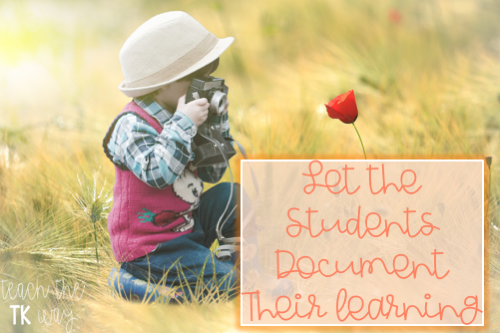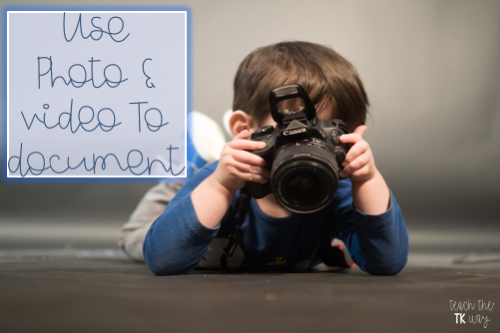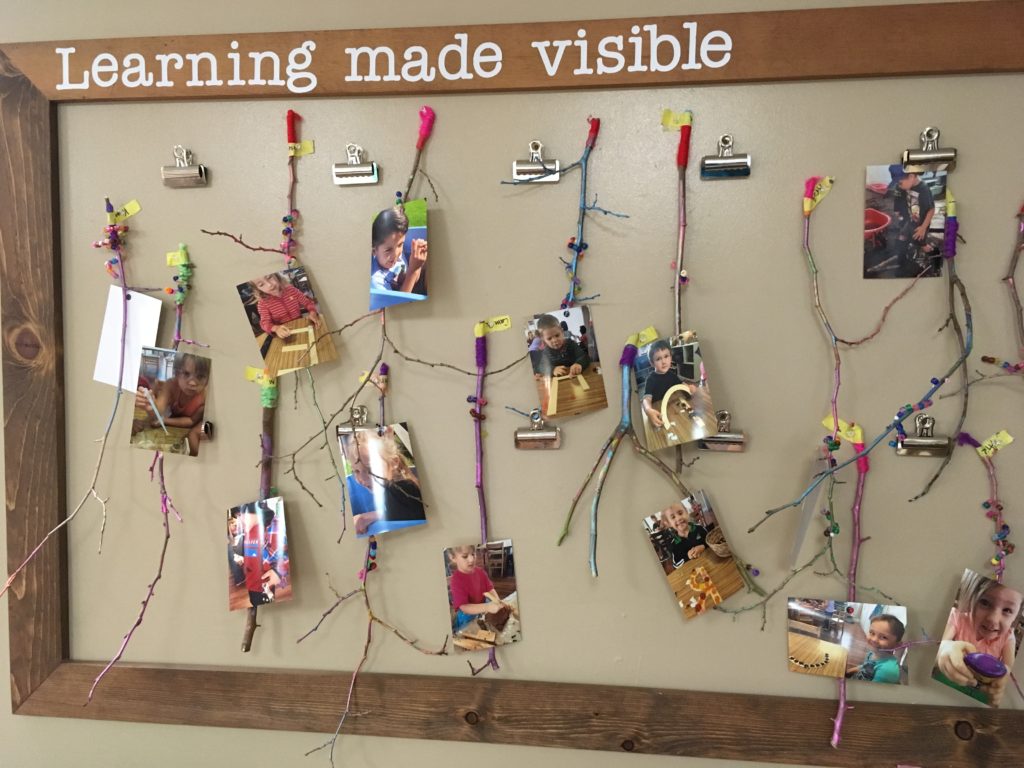Children’s learning can be challenging to document, especially when the program fully embraces child-centered activities versus seat work. Children’s learning adventures should evolve with the students and families in the program. I have gone from a letter of the week style teaching. Where we focus on one single concept at a time. One letter, one number, one shape, etc. To whole language plans. Where we focus on sounds and breaking down what we hear, rather than individual letters. One thing that stays consistent is the need for observing and then documenting the learning. I am currently embracing a balanced literacy program, where I have a healthy combination of all teaching styles.
Children’s Learning Styles
At the beginning of my teaching journey, many parents wanted a year-long alphabet book. I was to keep these treasured pages all year in a filing cabinet. Never to be seen again by the children. And sent home on the last day of school. It was considered a yearbook of sorts.
- We painted with Jell-o on the letter J (what a sticky mess).
- Added Cheerios to the letter C (and brought in the mice)
- Teachers saved eggshells all year so we could crush them and glue them onto our pages (hello salmonella)
- And my favorite (insert eye roll)- students cut pictures out of old magazines (from the 1970s, before I was born) to add to our F is for a family page. But first, teachers spent weeks scouring the magazine artifacts and removing inappropriate ads. SMH.
Every child went home with the same ABC book. You guys, seriously, the EXACT SAME BOOK.
In some cases, the teachers even moved parts around so the craft ‘looked like something’. {PSA} Please~ if this is still happening in your classroom — stop. One of the most detrimental things we can do as educators; telling the child, inadvertently or not, that their idea doesn’t LOOK the way we think it should. This single activity halts creativity and stifles the learning process. INSTEAD: encourage students to “tell you about it”. Then record their words, through written documentation and voice recordings.
As my pedagogical understanding grew I was able to turn the activity around. Back when Pinterest was first a thing you would find activities that were CUTE, but definitely not age-appropriate or child-centered. We were falling back on “craftivities“. I wanted something more for my students. After researching, I found the Reggio Approach. Fascination and intrigue ensued. I knew that my own style of teaching needed a major overhaul if it was going to work.

Child-Led Learning
I brought in authentic learning materials. Allowed the children to decide exactly what they would do each day. And I let them choose if they would save or even bring an item home. Allowing the children’s learning to actually be their choice, I was the facilitator. This was met with great resistance, FROM THE PARENTS. I realized that if I was going to make this work I would have to show moms and dads and grandmas and grandpas that their precious treasures were actually learning things in my classroom.
I knew the students could count to 100 and sound out words with beginning sounds. They could rhyme and segment phonemes. As well as create and verbalize what happens during chemical reactions. They could balance non-traditional items, engineer intricate towers and make compassionate connections with others. But the parents could no longer SEE the fruits of the child’s labor. And ultimately what they were paying for.
Remember tuition is the business, but without happy parents, the business does not survive. So I needed to make some exceptions and create family-friendly activities. Enter the Reggio Approach once again. I decided that in order to stay true to my teaching philosophy I needed documentation that the children were in fact busy, and learning, each day.

Children’s Learning Experience
The original ABC book was only a small piece of our day. And yet we placed this huge importance on it. What about the students who could count to 100 but not necessarily know the first letter of their name. Or the students who sat and read stories to other students, the Gecko, and the stuffies? What about the students who did all of their learning in the outdoor classroom? Balance, engineering, chemistry, math, and literacy? Where was the documentation for all of these concepts? Consequently, I needed to make some changes and FAST!
WHEN WE KNOW BETTER WE DO BETTER.
I began documenting the learning through pictures. Hanging them on the walls, sending them home, and making the end of the year memory books. Children’s learning styles were all covered using this hands-on style of documentation. Now, this is a much larger undertaking than the original ABC books. But the outcome is much more meaningful. I had a group of students work together to make the famous Horseshoe Bend of the Grand Canyon. They made it in the sandbox and worked on it for 2 weeks straight. I took photos, wrote down their words, extended the learning through technology and books. Eventually, I compiled the documentation into a dollar store photo album. Parents tell me their students STILL look through those photos.

Learning Displays
A group of students loved the art center, so we went ahead and created an alphabet display to hang IN THE CLASSROOM. We researched and brainstormed all the words they knew (with some adult help, they are 4-year-olds after all). We added some related items to their display, in most cases, and in others, they just colored or painted the letter. Then they were in charge of showing the rest of the class the letters they made. This resulted in the whole class heading to the letter display when we talked about a new letter or word and trying to find the sounds.
I videoed my students singing and signing the alphabet. I used videos to showcase language and social development. Most importantly I then DISPLAYED the children’s learning throughout the classroom. I grabbed a digital photo frame and uploaded photos once per week. Looking through the photos and recalling the learning drew children to the area. Parents were able to watch the photo display during drop off and pick up. It gave them concrete examples of what their child was learning and sparked conversations with their students. We created ABC displays at the children’s level. And then continued to reference those displays all year long. No more full filing cabinets that the children never saw the inside of until June.
Make Learning Connections
In trying to satisfy child-led learning and help parents find a suitable compromise I found myself. As a result, I found what calls me to education- the connections. The connections between students and teachers. The connections between families and the classroom. And the connections between learning and early education. I challenge you to document learning in a more meaningful way this year. Start small. Make changes that you can keep up with. Actually, involve the students. Show off what your littles are accomplishing each day. And BONUS points from me if nothing looks the same.

Looking for more inspiration? Want to create a classroom sanctuary of your own? Grab your FREE Master Guide to a Natural Classroom here!




5 Responses